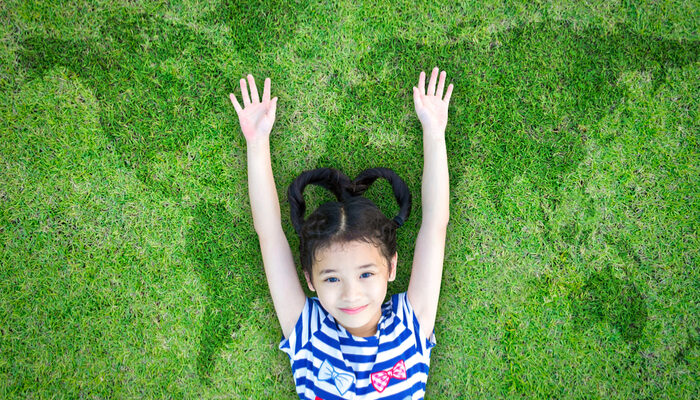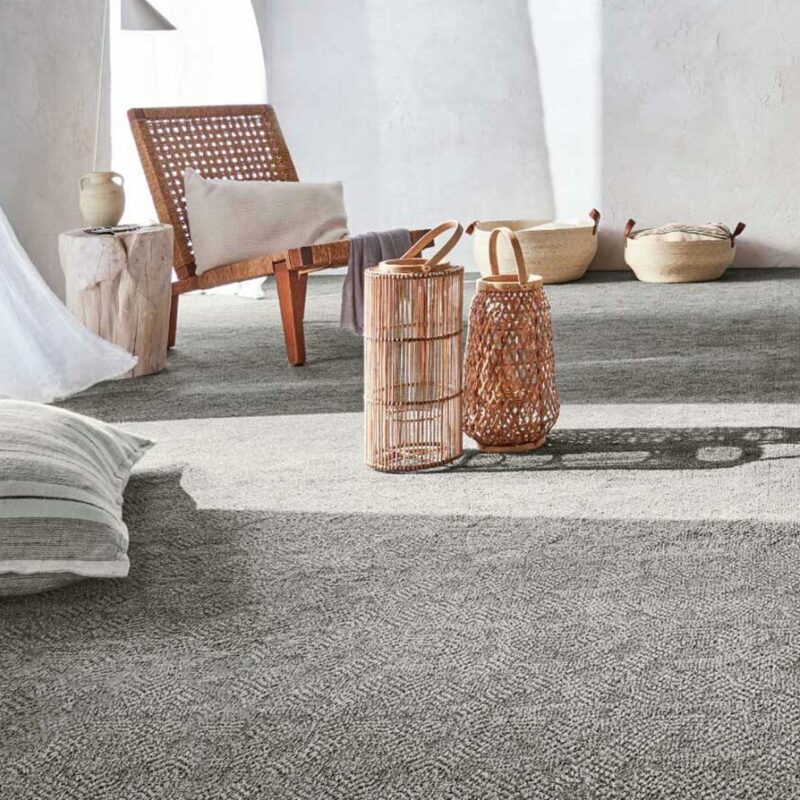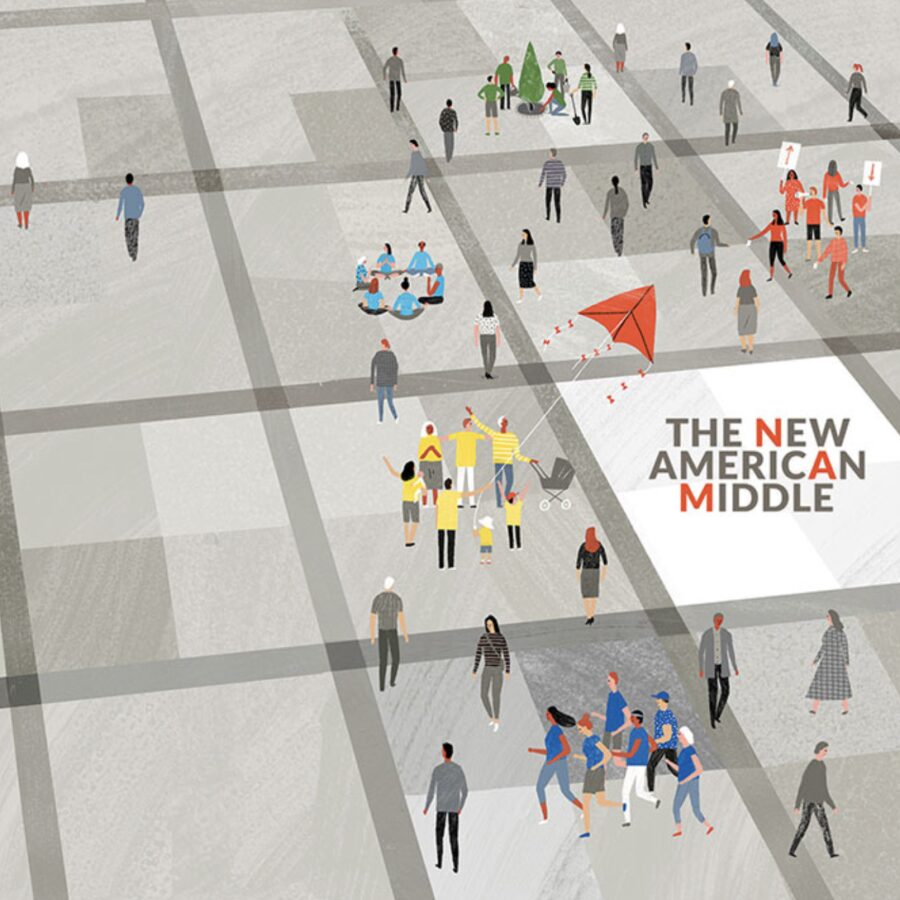Companies with a Conscience
What do moisture-wicking socks, hipster eyeglasses, Chunky Monkey ice cream, loaves of honey wheat, and a kingdom full of animals have in common? I’m glad you asked. They’re all associated with companies that are helping make a difference in the world. In ways large and small, and by utilizing social-consciousness models of various ilks, Bombas, Warby Parker, Ben & Jerry’s Homemade, Panera, and the Disney Company—the brands affiliated with the aforementioned items—are demonstrating that business can be about a whole lot more than the bottom line. Through monetary and product donations, hands-on volunteer efforts, special projects, and institutional practices, these brands are carrying their messages and their missions far afield of their boardrooms, into US neighborhoods and remote areas around the globe. Let’s find out how brands that bring you comfortable feet, corrected vision, all manner of carbs, and some pretty memorable live and animated animals are making a mark.
Warby Parker—Visionary Entrepreneurship
Thinking about ordering some stylish new prescription eyeglasses or sunglasses online? If you do a Google search, chances are you will run across e-retailer Warby Parker. If you check out its website and look beyond the trendy wire rims and hip teal-blue frames, you’ll notice that the brand has a unique social responsibility mission. The company provides eyeglasses to individuals in developing nations—not through outright donations, but by helping recipients take charge of the donation process. It does this through an organization called VisionSpring, which company cofounder Neil Blumenthal worked for before launching Warby Parker.
At VisionSpring, he became steeped in a social-enterprise philosophy that eschews the more traditional “you buy one, we give one” donation framework (think TOMS) in favor of a model that equips local people—referred to as vision entrepreneurs—with the skills and resources needed to create job-generating businesses, while also addressing an important health concern. Here’s how the process works: For every pair of glasses it sells, Warby Parker funds the production of a pair of eyeglasses for VisionSpring, which VisionSpring then sells directly to its vision entrepreneurs.
Warby Parker’s donations actually meet people’s needs and don’t displace local businesses.” VisionSpring founder (and optometrist) Dr. Jordan Kassalow told Forbes that this model avoids several problems common in outright-donation programs: “Earlier in my career, when I worked with donation-based organizations, I literally had people who were blind hand back glasses to us because they felt those particular glasses made them look ridiculous; there was ridicule culturally.” In addition, Kassalow cited the merits of establishing a locally owned company, which “increase[s] the chance of having the solution embedded sustainably in the community.”
As of December, 6-year-old Warby Parker had distributed more than 1 million pairs of glasses through VisionSpring. A Certified B Corporation, (another is Patagonia, the subject of a 2015 Hypergraphia blog), the brand was ranked 21st among the World’s 50 Most Innovative Companies by Fast Company, being recognized “for prescribing social good at home.” Warby Parker, keep doing what you’re doing. We like what we see.
Bombas—a Lot of Buzz About a Sock
Bombas, another startup, has found a niche distributing free socks to the homeless in cities and towns across the United States. A buy-one, give-one model is the approach the brand’s cofounders, David Heath and Randy Goldberg, chose for their sock company. For every pair of socks Bombas sells, the company donates a pair to someone in need. As its website points out, “Socks are the most requested item at homeless shelters.” It turns out many shelters won’t accept used socks, and new ones are seldom donated. And not surprisingly, people living on the street wear through socks rather quickly.
Enter Bombas. The New York-based e-retailer got its start in 2013, raising $145,000 through the crowdfunding site Indiegogo. Family and friends provided additional funds, and Shark Tank’s Daymond John came through with a $1 million investment deal (in return for a stake in the fledgling company).
Bombas sells several styles of socks for men, women, and children—in traditional white and gray, as well as fuchsia, purple, bright orange, and other cheerful shades. The donated socks, meanwhile, have features designed specifically for their intended wearers: reinforced seams for durability and an antimicrobial treatment to prevent the growth of fungus and keep the socks fresher through extended wear. And instead of the rainbow-hued assortment available online, the donated socks are black and gray so that dirt doesn’t show as readily.
The brand, whose name comes from bombus, the Latin word for bumblebee, stands by its motto “bee better” by working with different charities and organizations to distribute its socks. Bombas has a network of 600 giving partners in all 50 states to deliver socks to those in need. It partnered with the Gap in late 2015 to expand the reach of its giving, offering exclusive Bombas styles for Gap shoppers to buy online and in-store. And the brand has begun a partnership with the Veterans Administration and has one in the works with Special Olympics.
The bee design stitched into each pair of Bombas socks serves as more than a distinctive logo—it’s a clever representation of what the brand is all about. It’s a reminder, a mantra even, “that these socks are engineered and designed with thought to bee better,” the company’s website affirms. “A reminder that you helped someone in need with your purchase. And a reminder that we’re all connected and [that] little improvements can add up to make a big difference.” This past fall, Bombas surpassed its original goal to donate 1 million pairs of socks by 2025, and then hit the 2-million mark a mere five months later. Making a difference? That just might “bee” an understatement.
Panera Bread—Dough-Nations and Cafes That Care
You know that delightful bread and those mouthwatering pastries Panera Bread cafes bake every day? Have you ever wondered what happens to the extras (and secretly hoped there was a way to get your hands on a spare cinnamon-crunch bagel or two)? Well, the bad news is that Panera doesn’t hand out its surplus sourdough to the likes of me. The good news? All that doughy deliciousness doesn’t go to waste.
Through its Day-End Dough-Nation program, the company makes sure its extra baked goods get into the hands (and mouths) of those in need. It does this by teaming with local nonprofits in the communities where its stores are located. Churches, schools, hunger-relief organizations, and other aid groups are welcome to apply for donations. The process is simple: Fill out an online form verifying your 501(c)(3) status, wait to be vetted, and once you get the green light, show up at your local store at closing time, ready to pick up leftovers. Oh, and when you arrive, be sure to bring a hefty container, because chances are, you’ll leave with a bounty.
“I was blown away by the amount of goods they gave us,” Stephen Banks, pastor of the Richmond Heights, Ohio, Church of the Nazarene, told Cleveland.com’s Kyla Price. Expecting to come away with perhaps a box or two of food, his parishioners returned to the church with six 30-gallon bags of baked goods they could serve during their weekly community brunch and at the church’s preschool.
We love that day-end but perfectly edible Panera baked goods aren’t discarded, but what we find even more impressive are the fast-casual chain’s Panera Cares community cafes. These unique restaurants—located in Chicago; Boston; Dearborn, Michigan; Clayton, Missouri; and Portland, Oregon—operate on a pay-what-you-can model, asking patrons to give what they care to contribute for their sandwiches, soups, and desserts.
Ron Shaich, the company’s founder and chairman, shared his vision for feeding the hungry in a welcoming atmosphere: “My idea was that you should be able to eat a nutritious meal with the same dignity as everyone else, in the same place as everyone else. It would let you hold your head up high, and rebuild a bit of your confidence.”
Panera has placed a great deal of trust in the customers of these restaurants—and it’s paid off. After some initial confusion surrounding just how patrons should think about paying for their meals (signs were posted listing suggested donation amounts for menu items and store employees gave brief tutorials), the system appears to be working. Shaich said about 20 percent of the cafes’ visitors pay less than the suggested amount for their meals, about 20 percent pay more, and about 60 percent pay the suggested prices. And here’s a bonus—the icing on the scone, you might say—the extra money earned by the five nonprofit stores goes into a fund to train at-risk youth to be Panera employees.
Ben & Jerry’s Homemade—Climate Change in a Carton
Ben Cohen and Jerry Greenfield founded their eponymous ice cream empire on a platform of social activism, and although the company has been owned by Unilever since 2000, the brand’s commitment to social causes remains as fervent as ever. In keeping with the brand’s quirky, nontraditional approach to social involvement, one of Ben & Jerry’s most recent efforts called attention to global warming—with a tasty twist. The Vermont company’s Save Our Swirled (or, yes, SOS) campaign was developed in conjunction with activist group Avaaz and Tesla Motors. Each carton of the delectable concoction—raspberry ice cream dotted with marshmallow and raspberry swirls and laced with mini dark- and white-fudge cone bits—directed consumers to an online petition calling on world leaders to take concrete steps to curb global warming at the December 2015 Paris climate-change summit. “If it’s melted, it’s ruined” was the campaign’s tagline.
No newcomer to environmental activism, Ben & Jerry’s does more than serve up its advocacy in a cone or a cup (or, let’s be honest here, straight from the carton). Its website notes that it has a “long history of fighting for climate justice and finding ways to reduce the environmental impact of our business.” Other Ben & Jerry’s environmental efforts include a carbon-offset program for its Vermont manufacturing facilities, initiated in 2002, and Caring Dairy, a partnership with the Natural Resources Conservation Service that encourages farmers to reduce carbon emissions through crop rotation, no-till practices, and better soil management.
One look at the Values section of Ben & Jerry’s website makes it clear that environmental stewardship is just one of a litany of social causes the ice cream giant champions. We applaud the brand’s commitment to making our planet a finer place.
The Walt Disney Company—“Don’t Just Fly. Soar.”
The Walt Disney Company may trace its origins to a tiny mouse, but the brand’s social activism is anything but trifling. A recognized leader in corporate social responsibility, this worldwide entertainment conglomerate’s volunteerism, charitable giving, and conservation efforts make it an unparalleled corporate citizen. In 2015, the company gave $333.3 million to nonprofits around the world via cash donations and in-kind and product contributions, benefiting children, families, and communities through its outreach.
A strong proponent of local involvement, Disney encourages its employees (who it calls cast members) to pitch in through its VoluntEARS program. VoluntEARS from all levels of the company serve their communities by doing such things as collecting and delivering toys, tutoring children, building houses, and supporting the arts. The projects are as varied as the cast members who roll up their sleeves. Among dozens of recent efforts, Disney volunteers have constructed a playground in Anaheim, California; built a barn for a central Florida Audubon Society bird sanctuary; removed trash from the shoreline of Kasai Rinkai Park, in Tokyo; cleaned up a campsite for the physically handicapped in Hong Kong; and raised money for victims of the 2010 earthquake in Haiti.
With an entire park devoted to wildlife and with live animals in residence at its other theme parks around the world, Disney’s environmental legacy should come as no surprise. The Disney Conservation Fund currently supports 141 projects around the globe, protecting native habitats and restoring critical ecosystems. From efforts to rehabilitate sick and injured Hawaiian monk seals to initiatives to reduce carbon emissions and secure pivotal watersheds in the Congo Basin and along the Amazon—aiding endangered gorillas and okapis in the Congo, and Andean spectacled bears and yellow-tailed woolly monkeys in Peru—the company’s reach is far and its projects multifarious.
These and the myriad other conservation projects the Disney Company funds or spearheads would surely have made company founder Walt Disney proud. After all, he once said, “I have learned from the animal world, and what everyone will learn who studies it is a renewed sense of kinship with the earth and all its inhabitants.”
Photos: Shutterstock







